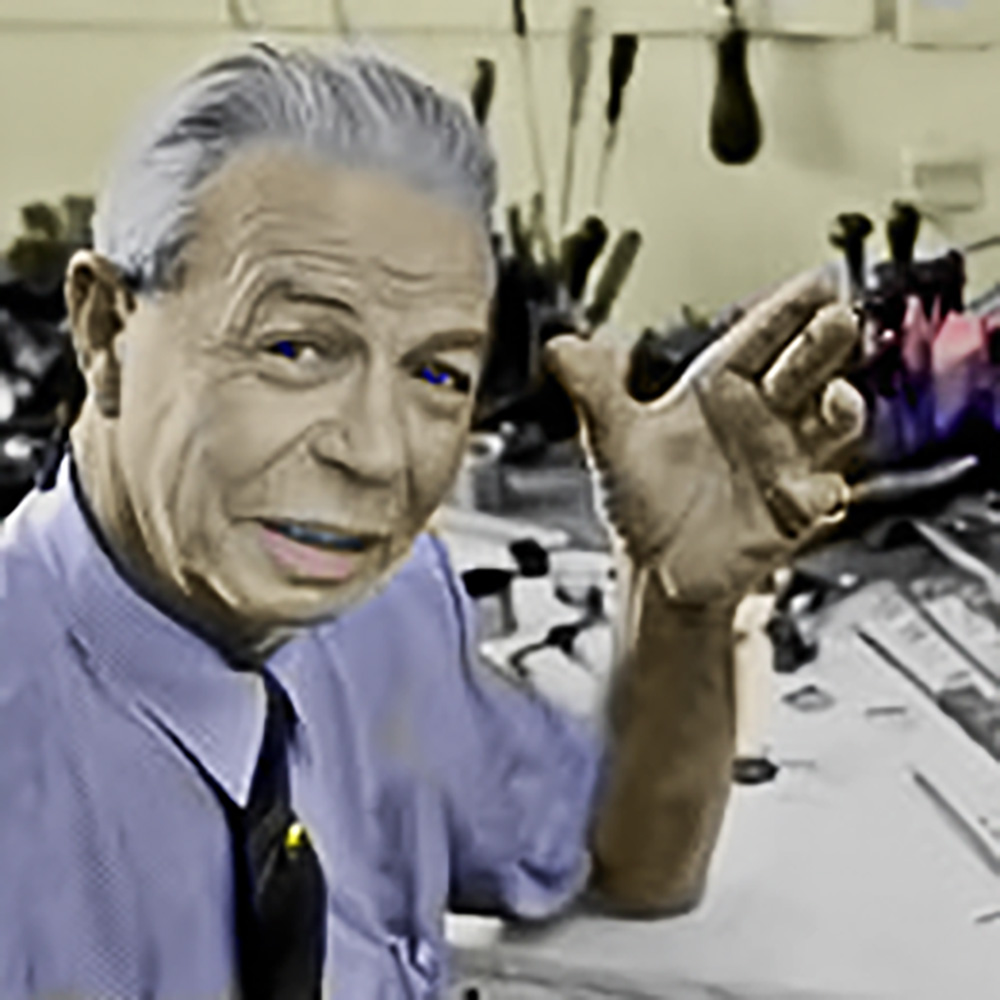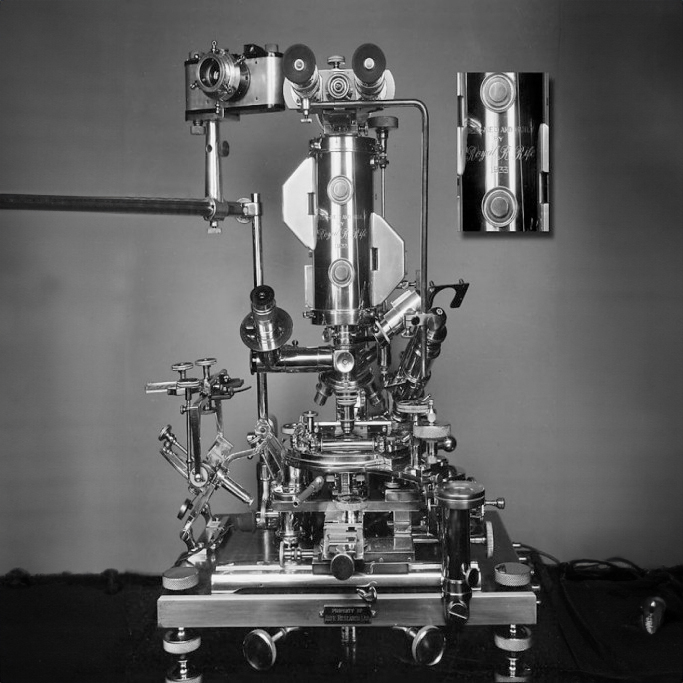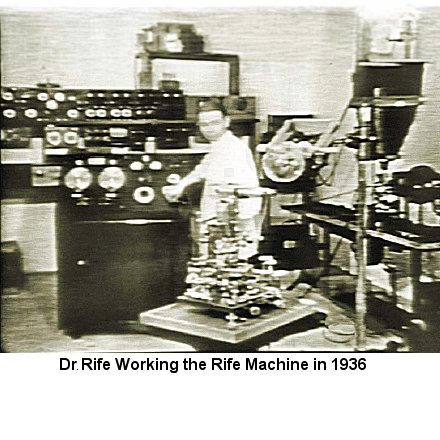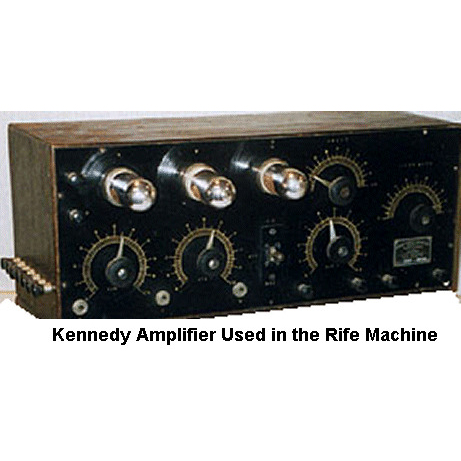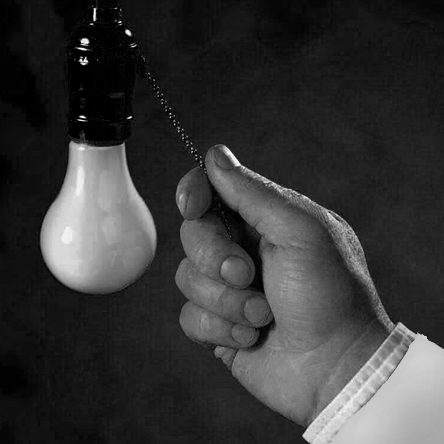
While Rife and his associates were creating a science of the future, they were living in a scientific world of the past-vastly different from the one in which the medical research goliaths were taking shape and which would dominate post-war society. These were vast enterprises linked to powerful financial interests. A breakthrough of the kind Rife was engineering would threaten not only massive investments but even the political empires behind them. Thus, it was not only the doctors but leading scientific authorities of the “monomorphism church” who were ready to oppose Rife and those whose research supported his discoveries. Two examples provide a valuable historic picture of the difference between Rife’s smaller world and that which he unknowingly was challenging- a world linking the doctor’s union, the health megacities, and the huge financial investments behind them – as well as the government’s politicized involvement in medical research.
Henry Siner, Rife’s assistant, passed through New York in January 1939 on his way to England where he would demonstrate the microscope and assist in the establishment of a Rife-like English laboratory. While in New York, he visited a Dr. Carscarden and was shown “the medical centre.” Siner was awe-struck, but he also opened the eyes of those still in the stone age of bacteriology.
Dr. Gruner of Canada wrote to Milbank Johnson, explaining his frustrations and the reality of the scientific orthodoxy dominating Canada, the Rockefeller Institute in New York, and the Washington research laboratories: “The crux of the whole problem is the identification of the ‘virus’, otherwise ‘BX’ not only in itself, but also when admixed with other matter. BX now goes by the name of ‘elementary bodies’. The center of controversy is now in the question of just what those bodies are. I myself consider them to be the same as BX. Well, the subject came up some time ago when Dr. Archibald and myself called upon Rous at the Rockefeller to see the work on the Shope virus and the term ‘elementary bodies’ came up, when I showed my photographs of ‘my’ e-b. He seemed much surprised that I should have found any.” (Note: Rous found the first cancer-causing “virus” in 1911 but wasn’t awarded the Nobel Prize until 1966 when he was 86 years old.) “After that, the subject of the Glover organism came up, and we went to Washington to see the work there on that organism. . . . After long drawn-out consideration I decided for my part that Glover’s ultramicroscopic phase was the same as BX and ‘e-b’, but of course the question (whether this ultramicroscopic phase can develop into cocci and then bacilli) was a very different one. . . .
AMA Takes Royal Rife to Court
The Department of Public Health at Washington had undergone change of management . . . as they had just about decided to close down the Glover work as useless. “About the same time, but earlier by about three weeks, an immunologist was appointed here by Dr. Archibald, and a bacteriologist as well, both trained and approved by the Prof. of Bacteriology, to check up my work, with a strong bias against the existence of any cancer germ at all. From that time to this, a period of nearly nine months, progress has virtually ceased. “It was a loss that I could not ‘get’ your careful expositions of that subject in relation to the action of BX. Since that memorable occasion of being in your company, so much has flown on in regard to the ‘phages,’ and yet so little is the subject a topic of study in the Universities (I think). However, the conception of ‘mutation,’ ‘pleomorphism,’ ‘developmental cycles of bacteria’ has been uppermost in our thoughts (Dr. Archibald and myself). The battle is between the ‘monomorphists’ and the ‘pleomorphists.’ To me, bacteriology is an effete product or dead thing under the current academic view, whereas the other concept not only explains so much that we see in nature, but is actually demonstrated in the microphotographs in the textbooks themselves. It is clear that the authors have never unravelled their own photographs, or else they would see that cocci become bacilli all the time! “Dr. Rife has, of course, the indispensable tool to effect the proofs. To this day the opticians say that what he did cannot be done.”
“The people in London, whom I interviewed last year about it, were very scornful, and brought out the age-old argument about wave-lengths (I think Dr. Archibald quietly is amused at them, too; it is so like the Galileo business) . . . The BX may not be ‘ultramicroscopic,’ it is just not seen because the light used does not show it up, as Dr. Rife demonstrated in his laboratory that time. “All this goes to show that I myself support Rife’s findings as much as ever. I still think his instrument is of supreme value. But even if it were available in many more places, few there are who will trouble to scrutinize the things they work with. We established that with few exceptions the people who work with viruses never look at their material microscopically; they never look at their tumors except with routine haematoxylin sections; they certainly never examine the living tissues. Even the wonderful cinematograph pictures of the Lewises contain the particles we consider etiological, and they never notice these objects at all-dancing about all over the place, much like BX-but the dance does not interest them!” This inability to “see” what is right in front of them is one of the reasons cancer researchers have failed to find the cause of cancer (the other reason is the politics involved).
In 1983, the Nobel Prize was awarded to Barbara McClintock for h e r work in gene research. A biography of McClintock by Evelyn Fox Keller titled A Feeling For the Organism describes h o w McClintock learned to see in a special way. It is essentially what Gruner was writing about in 1939. He not only had s e n Rife’s work validated but witnessed a myriad of researchers who could have seen something similar without Rife’s aid-if they had looked. Keller describes how Nobel Prize winner McClintock and other first class scientists looked and “saw” in a special way: “For all of us, our concepts of the world build on what we see, as what we see builds on what we think. Where we know more, we see more. . . . “What is it in an individual scientist’s relation to nature that facilitates the kind of seeing that eventually leads to productive discourse? What enabled McClintock to see further and deeper into the mysteries of genetics than her colleagues? “Her answer is simple. Over and over again, she tells us one must have the time to look, the patience to ‘hear what the material has to say to you,’ the openness to ‘let it come to you.’ Above all, one must have a ‘feeling for the organism.’ “This intimate knowledge, made possible by years of close association with the organism she studies, is a prerequisite for her extraordinary perspicacity. ‘I have learned so much about the corn plant that when I see things, I can interpret (them) right away.’ Both literally and figuratively, her ‘feeling for the organism’ has extended her vision.”
Rife sitting in his chair with the microscope for as long as 48 hours without moving demonstrates the extent to which he was devoted to this process of “seeing.” And compared to the army of microbiologists who couldn’t see even the obvious (as Gruner noted) these opponents of Rife-defending their turf and using their powerful positions at the Rockefeller Institute and Harvard to attack Kendall or Rife-now can be recognized for what they were: inferior scientists.
Moms Fishbein controlled the AMA and also intimidated the press and other institutions to such an extent that his actions, no matter how heinous, could go virtually unchallenged. Such was the organization Rife faced during the 1939 trial powerful medical union which played by its own rules, ignored the law, promoted products which were unhealthy, intimidated the press, politicians and medical researchers, and unfortunately perverted basic principles of the American nation.
Rife was about to leave for England in May 1939 when he was subpoenaed. The trial opened on June 12, 1939 with Judge Edward Kelly presiding. On one side was Philip Hoyland backed by his high-priced legal talent. Alone against them stood local San Diego attorney Bert Comperet. The opposing lawyer tore into Rife in a way he had never experienced. His nerves gave. A doctor recommended that he take a drink to calm himself. Rife’s alcoholism began.
Ben Cullen’s remembrance of this period includes the following: “Well Rife was called in to testify two or three times. Judge Kelly was a wonderful man, but Rife had never been in court and he just became a nervous jibbering idiot, in that he couldn’t stand it and he did his best to keep calm, his hands shaking like a leaf of course. He had started smoking pretty heavily and inhaling it which he didn’t use to do before. Anyway he took to drinking because the doctor couldn’t find anything to stop his nervousness without forcing him into a drug addict. Finally he got so he had to crave it. “Afterwards, during his clear moments when he wasn’t under the influence of liquor, he would endeavor to progress but every doggone day at a certain time he would go and get one little nip out of his car and that was the end of it.”
While the court case was taking place (and afterwards), the AMA visited all the doctors involved. Those who didn’t stop using the Royal Rife Machine would lose their medical license. Dr. Hamer quickly returned his instrument. Other kinds of pressure were put on the Special Research Committee members. Milbank Johnson apparently didn’t budge. He sent his own Royal Rife Machine to Dr. Gruner in 1942, still hoping for the international confirmation which would enable him to proclaim the cure for cancer in a way that was incontestable. But Gruner was to disappoint him by not using it out of fear. Johnson’s Who’s Who biographical information for 1944 emphasized that “now” (in 1944) he was still head of the committee, still fighting for a way to bring Rife’s discoveries to the world. But most of the others beat hasty retreats. After Johnson’s death in 1944, the records of the committee were destroyed.
Cullen remembered: “It was so controversial. They (the University of Southern California) were scared to death.” Mystery shrouds Johnson’s death. One rumor is that he was preparing to announce the cure for cancer just before he was hospitalized. The suspicion exists that he was silenced, but the evidence is circumstantial. However, two federal inspectors did examine his hospital record in the late 1950s-early 1960s. They concluded it was likely that he was poisoned. Sometime in the 1944-46 period, a new technician in Rife’s laboratory stole one of the valuable quartz prisms from the Universal Microscope, rendering it inoperable. Just prior to the theft, Dr. Raymond Seidel had published a description of the microscope in the Smithsonian annual report. The report described how the cancer virus “may be observed to succumb when exposed to certain lethal frequencies.” This was the news which the opponents of Rife were determined to have suppressed.
Publication in the Smithsonian report was a dangerous breach of their wall of censorship. Following the publication, Seidel soon became aware that he was being followed. Then a bullet crashed through his car windshield while he was driving. Dr. Couche continued using the Royal Rife Machine (until the mid-1950s). He defied the AMA and had his membership revoked. Dr. Royal Lee of the Lee Foundation for Nutritional Research in Milwaukee, Wisconsin spent many weekends with Royal Rife. He later published a small report on the Fishbein-Rife tragedy. It includes the following: “No medical journal was ever permitted to report on Rife’s work. This one by the Franklin Institute slipped by the censors, since this organization is not medical but supports general scientific activities. But that mistake was soon rectified, it appears, as there is still no general knowledge of Rife’s epoch-making discoveries.
Again, the iron curtain of Fishbein is effective. . . . We can give a list of various subjects on which this censorship is rigorously applied. Only the treatment of disease with synthetic drugs is carefully reported. Botanicals are played down, foods as remedies are almost as taboo as Rife’s work . . . the official definition of a medical remedy for disease . . . excludes automatically any vitamin, nutritional mineral or enzyme . . .” Beam Ray won the case against Philip Hoyland. Judge Kelly stated at the end of the trial, “The court is not called upon to pass on the merits of this machine. But the people here before the court have great confidence in its powers, both curative and money making.” As for Hoyland, Kelly had judged his character accurately. Kelly: “I am not convinced of his blameless character in these transactions as to find that he is in court with that degree of manly cleanliness that the court insists upon. He stands alone and opposed to the directors of the corporation. The court has confidence in their honesty and integrity. . . . I am denying the plaintiff (Hoyland) has clean hands. I am denying him the relief he demands because I don’t believe he was above trying to get an advantage for himself in every transaction. . . . I am holding that the man who asked relief here is not in equity with clean hands, and I say again I’ll not give him relief.”
While the AMA’s role behind-the-scene did not come up in court, Judge Kelly must have learned about it. When the trial was over, Kelly offered to represent Beam Ray in a new suit against the AMA. But Ben Cullen was broke. He had even lost his house. He got a job and left the cure for cancer to others. Rife kept his laboratory intact until 1946, but his drinking eventually forced him to sell it piece by piece. So, although the AMA lost its court case against Beam Ray, it won the war. But millions of Americans suffering from cancer decade after decade would lose. Fishbein’s action in 1939 makes him, in this writer’s opinion, the worst mass murderer in American history. Note: Just prior to the attack on Rife in the spring of 1939, the only other quality “electronic medicine research lab in America was mysteriously destroyed by fire.
For 15 years, J. C. Burnett’s lab in New Jersey had conducted research and kept records on “electronic energy in its relationship to the human body.” The $250,000 lab (1924 dollars) on a 400 acre estate, and more than $500,000 invested in research, were financed by Burnett’s wife, the former Cora B. Timken of the Timken Roller Bearing family. It was her relative on the west coast who had first financed Rife. The lab was burned to the ground while Burnett and his wife were visiting Rife in California-a strange coincidence in that dark, pivotal year of 1939.
